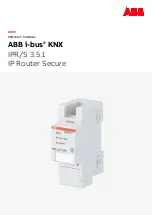
NOTE: This equipment has been tested and found to comply with the limits for a Class B
digital device, pursuant to IC Rules. These limits are designed to provide reasonable
protection against harmful interference in a residential installation. This equipment
generates uses and can radiate radio frequency energy and, if not installed and used in
accordance with the instructions, may cause harmful interference to radio
communications. However, there is no guarantee that interference will not occur in a
particular installation. If this equipment does cause harmful interference to radio or
television reception, which can be determined by turning the equipment off and on, the
user is encouraged to try to correct the interference by one or more of the following
measures:
•
Reorient or relocate the receiving antenna.
•
Increase the separation between the equipment and receiver.
•
Connect the equipment into an outlet on a circuit different from that to which the
receiver is connected.
•
Consult the dealer or an experienced radio/TV technician for help.
2.9 Information on test modes and additional testing requirements
Module test instructions are provided in the online manual in RF tests section.
To investigate the maximum EMI emission characteristics generates from EUT, the test
system was pre-scanning tested base on the consideration of following EUT operation
mode or test configuration mode which possible have effect on EMI emission level. Each
of these EUT operation mode(s) or test configuration mode(s) mentioned above was
evaluated respectively.
RADIATED EMISSION TEST (BELOW 1GHz):
Pre-Scan has been conducted to determine the worst-case mode from all possible
combinations between available modulations, data rates, XYZ axis and antenna ports (if
EUT with antenna diversity architecture). For the test results, only the worst case was
shown in test report.
RADIATED EMISSION TEST (ABOVE 1GHz):
Pre-Scan has been conducted to determine the worst-case mode from all possible
combinations between available modulations, data rates, XYZ axis and antenna ports (if
EUT with antenna diversity architecture).
2.10 Additional testing, Part 15 Subpart B disclaimer
The modular transmitter is
only
FCC authorized for the specific rule parts (i.e., FCC
transmitter rules) listed on above. If used as part of other product, the host product
manufacturer is responsible for compliance to any other FCC rules that apply to the host
not covered by the modular transmitter grant of certification. The final host product
requires Part 15 Subpart B compliance testing with the modular transmitter installed.
























